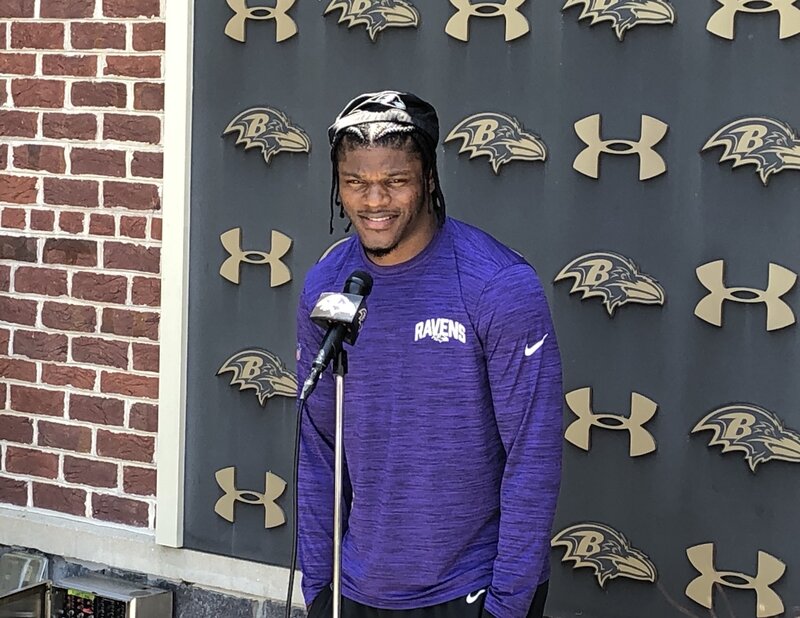The 2009 NFL Draft has come and gone with Ozzie Newsome adding six new players to a team that reached the AFC Championship game last season, despite a passing offense that ranked 28th in the league.
Not one was a wide receiver.
Despite fans and national pundits clamoring for the Ravens’ need to improve the receiving corps of Derrick Mason, Mark Clayton, and Demetrius Williams, Newsome did not find a receiver to his liking. However, the Ravens did succeed in upgrading their passing game—not to mention the entire offense—by drafting offensive tackle Michael Oher from Ole Miss with the 23rd overall pick.
Not expected to be on the board at No. 23, the Ravens not only drafted a great story but a huge, young upgrade at right tackle. While not a flashy pick (I’ll refrain from using the term “sexy” since it’s become the overused adjective of the weekend), Oher will provide a bigger boost to the passing game than any rookie wideout would have.
A rookie receiver rarely makes a dramatic impact in his first season—just ask Pro Bowlers Roddy White (29 catches in 2005) or Wes Welker (0 in 2004).
Though Hakeem Nicks or Kenny Britt could blossom into stars one day, it’s unlikely to happen in 2009. If the Ravens are looking to improve their Super Bowl chances this season, upgrading the right side of the offensive line was a far better choice.
The biggest key to improving the passing game is maximizing the development of the Ravens’ second-year quarterback. Giving Joe Flacco more time to throw will bring far more success than simply adding another receiver to the mix—unless that receiver had been Anquan Boldin, but the salary cap made that next to impossible.
Last season, offensive coordinator Cam Cameron regularly had to use max protection, leaving only two receivers running routes on passing plays. In the process, it virtually eliminated Todd Heap from the passing offense—a major weapon in the Ravens’ arsenal. The selection of Oher will minimize the need to keep Heap at the line of scrimmage to pass block.
Injuries have affected Heap’s ability to create separation in the open field, but he can still be an effective receiver—don’t forget, he still made the biggest catch of the year in the Tennessee playoff game.
Allowing Heap to focus on his pass-catching ability would go a long way in taking attention away from Mason in the intermediate passing game. His best days are certainly behind him, but a healthy Heap can still be an above-average tight end in the NFL.
The other factor in improving the passing game will be the contributions of Williams and Marcus Smith. We’ve seen the vast potential of Williams since his rookie season in 2006 when he caught 22 passes and two touchdowns.
Injuries have been the biggest hurdle for the 6-2 receiver. If—and clearly, it’s a major if—Williams can remain healthy, he represents a deep threat in the passing game and a bigger impact than any other rookie receiver the Ravens could have realistically chosen in the late-first round.
Smith could also provide a boost to the passing game. Despite failing to catch a pass last season, the 2008 fourth-round selection possesses good size (6-1, 215 pounds). The appeal of a newly drafted receiver is understandable, but reading Smith’s draft profile from last year would probably excite fans just as much as any receiver in the middle rounds of this year’s draft.
Before labeling Smith as a bust and writing him off, let’s see how a full offseason working with Flacco can help in his development.
Newsome claimed for weeks that he was comfortable with the receivers currently on the roster, and he appeared to be telling the truth. Upgrading the position should continue to be a priority between now and July, but it’s clear the Ravens did not feel the receivers in this draft were really an improvement over anyone they already had.
The real concern lies beyond this season. Mason, Clayton, and Williams are all unrestricted free agents following the season. It’s unlikely that Mason will return, considering his demands for a new contract and the team’s’ silence on the issue, but Clayton and Williams will need to prove their mettle this season to factor into the team’s future plans.
Regardless of what happens with the team’s wide receiver situation beyond this year, Oher is a safe bet to anchor the right side of the offensive line for the next ten years, providing the protection for Flacco to take the next step in becoming an elite quarterback.
Perhaps the Ravens’ franchise receiver of the future is already on the roster; White certainly looked like a bust until Matt Ryan turned him into a Pro Bowl receiver last season. Maybe Flacco does the same thing with Clayton, Williams, or Smith this season.
One thing is certain: the Ravens are building for long-term success on the offensive line—a strategy that will leave the team competitive for years—even if they lack star power at wide receiver.
Keep in mind, before the acquisition of Randy Moss and Wes Welker, the New England Patriots and Tom Brady won with pedestrian receivers because of a dominant offensive line. Dynamic receivers are entertaining, but line play wins championships.
Certainly, wide receiver will continue to be a position to try to improve, but Oher was a better investment for Flacco’s growth than the gamble of a rookie receiver.











